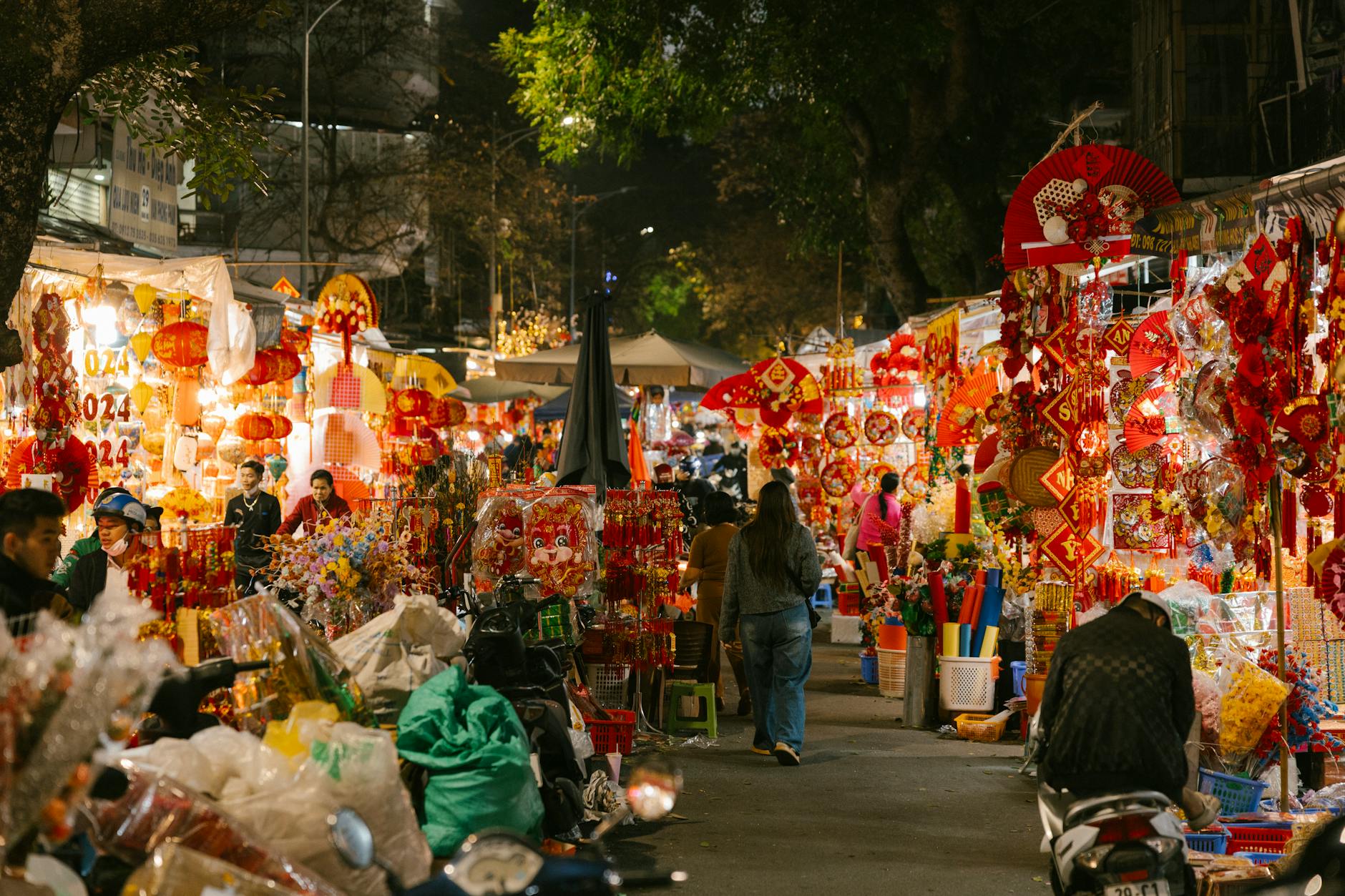Welcome to the world of ‘Crazy Rich Asians,’ an entertainment phenomenon that has captivated audiences worldwide. This cultural sensation, originating from the best-selling novel turned blockbuster film, has made significant strides in reshaping representation in media. Embraced for its opulence, humor, and authentic storytelling, ‘Crazy Rich Asians’ has become a beacon of diversity and inclusion in the entertainment industry. Join us as we explore the impact and significance of this groundbreaking narrative in popular culture today.
The Origins of ‘Crazy Rich Asians’
Let’s delve into the fascinating origins of ‘Crazy Rich Asians,’ a cultural phenomenon that has swept across the globe, captivating audiences with its lavish storytelling and diverse representation.
Kevin Kwan: The Author
Kevin Kwan, the brilliant mind behind ‘Crazy Rich Asians,’ was born in Singapore and later moved to the United States. Before penning this iconic novel, Kwan drew inspiration from his personal experiences growing up in an affluent Asian family. His intricate observations of social hierarchies, customs, and extravagance laid the foundation for the extravagant world depicted in the book.
Prior to the success of ‘Crazy Rich Asians,’ Kwan worked in the creative field, collaborating with renowned magazines and design firms. His keen eye for detail and gift for storytelling eventually led him to create a narrative that resonated with readers worldwide.
Publication History
The journey of ‘Crazy Rich Asians’ to publication was marked by both excitement and uncertainty. Initially released to modest expectations, the book soon gained traction through word-of-mouth recommendations and glowing reviews. Readers were drawn to Kwan’s witty prose, colorful characters, and satirical take on elite Asian society.
As the book garnered critical acclaim and skyrocketed up bestseller lists, it became a cultural sensation, sparking conversations about representation and diversity in literature. The overwhelmingly positive reception paved the way for the adaptation of ‘Crazy Rich Asians’ into a blockbuster film, further solidifying its place in popular culture.
Photo by Diana ✨
Plot Summary and Key Themes
In this section, we will unravel the engaging plot and key themes that make ‘Crazy Rich Asians’ a compelling read. From the riveting storyline to the underlying messages, let’s dive into the heart of this captivating narrative.
Main Plot Points
The story of ‘Crazy Rich Asians’ revolves around Rachel Chu, an American-born Chinese professor, who accompanies her longtime boyfriend, Nick Young, to his best friend’s wedding in Singapore. Unbeknownst to Rachel, Nick hails from one of the wealthiest families in Asia, leading her into a world of opulence, tradition, and intense scrutiny. As Rachel navigates the complexities of Nick’s privileged circle, she faces relentless judgment, familial expectations, and personal revelations that challenge her identity and relationship.
Themes of Wealth and Class
One of the central themes explored in ‘Crazy Rich Asians’ is the intricate dynamics of wealth, class, and family expectations. Through the opulent backdrop of Singapore’s elite society, the book delves into the disparities between old money and new fortunes, the pressures of societal norms, and the complexities of familial obligations. The contrast between extravagance and authenticity underscores the characters’ struggles with identity, belonging, and self-worth in a world where status reigns supreme.
Cultural Representation
Beyond the lavish settings and glamorous lifestyles, ‘Crazy Rich Asians’ offers a nuanced portrayal of Asian culture and its significance in a global context. The book celebrates the richness of traditions, customs, and values that shape the characters’ identities and interactions. From lavish family gatherings to nuanced social etiquette, the narrative showcases a diverse spectrum of Asian experiences while challenging stereotypes and misconceptions. By highlighting the complexities of cultural heritage and modernity, ‘Crazy Rich Asians’ invites readers to explore the layers of identity and belonging in a rapidly changing world.
Photo by Diana ✨
The Film Adaptation
The transition from the pages of Kevin Kwan’s novel to the silver screen heralded a new chapter in the ‘Crazy Rich Asians’ saga, captivating audiences with its opulent visuals and captivating storyline.
Development and Production
Bringing ‘Crazy Rich Asians’ to life on film was a collaborative effort involving key figures in the industry. Director Jon M. Chu masterfully helmed the project, infusing his own personal experiences and vision into the adaptation. The screenplay, penned by Peter Chiarelli and Adele Lim, carefully retained the essence of the novel while enhancing the cinematic experience for viewers worldwide.
Photo by Diana ✨
Casting and Performances
The casting of ‘Crazy Rich Asians’ was a groundbreaking moment in Hollywood, featuring an all-Asian ensemble cast that brought depth and authenticity to the characters. Constance Wu’s portrayal of Rachel Chu and Henry Golding’s depiction of Nick Young resonated with audiences, capturing the nuances of love, family, and identity amidst opulent backdrops. The stellar performances by Awkwafina, Michelle Yeoh, and Gemma Chan added layers of complexity and charm to the narrative, elevating the film to critical acclaim.
Box Office Success and Reception
Upon its release, ‘Crazy Rich Asians’ shattered box office expectations, becoming a cultural phenomenon and a testament to the power of diverse storytelling. Audiences worldwide flocked to theaters, drawn by the film’s allure and universal themes of love and family. Critics hailed the film for its engaging storyline, stellar performances, and vibrant portrayal of Asian culture, underscoring its impact on representation in mainstream media. The success of ‘Crazy Rich Asians’ not only set a new benchmark for inclusivity in entertainment but also sparked meaningful conversations about identity, belonging, and the future of storytelling on a global scale.
Photo by Diana ✨
Impact on Representation in Media
The influence of ‘Crazy Rich Asians’ on the representation of Asian characters in mainstream media has been profound, signaling a shift towards more diverse and authentic storytelling that resonates with audiences worldwide.
Breaking Stereotypes
‘Crazy Rich Asians’ boldly challenges traditional stereotypes of Asians in media by showcasing a cast of multifaceted characters with depth, complexity, and individuality. The film and book shatter monolithic portrayals of Asian identity, offering a rich tapestry of personalities that defy preconceived notions and clichés. From strong, independent women to conflicted cultural hybrids, ‘Crazy Rich Asians’ presents a spectrum of Asian experiences that celebrate diversity and authenticity.
Opening Doors for Future Projects
The success of ‘Crazy Rich Asians’ has not only shattered box office records but has also opened doors for more inclusive and diverse storytelling in Hollywood and beyond. By proving the commercial viability of projects centered around Asian narratives, the film has paved the way for underrepresented voices to be heard and celebrated in mainstream media. The positive reception and impact of ‘Crazy Rich Asians’ have encouraged studios and creators to explore a wider range of stories, perspectives, and cultural backgrounds, ushering in a new era of representation and visibility for Asian communities in entertainment.
Photo by HONG SON
Criticisms and Controversies
‘Crazy Rich Asians’ faced its fair share of criticisms and controversies amidst its acclaim. Let’s delve into some of the notable areas that stirred discussions and debates.
Critiques of Wealth Glorification
One of the main criticisms leveled against ‘Crazy Rich Asians’ revolves around the glorification of extreme wealth and opulence depicted in the narrative. Some viewers and critics argued that the extravagant lifestyles portrayed in the story perpetuated stereotypes of Asians as excessively affluent and materialistic. The focus on luxury and excess raised concerns about perpetuating unrealistic standards of wealth and reinforcing class divides. The film’s lavish settings and ostentatious displays of wealth sparked debates about the balance between celebrating affluence and inadvertently glamorizing exclusivity.
Representation Issues
Another controversy that surrounded ‘Crazy Rich Asians’ pertained to representation within the Asian community depicted in the story. Critics pointed out instances of colorism and lack of diversity among the characters, highlighting the predominance of lighter-skinned actors and limited representation of different Asian ethnicities. The film’s portrayal of affluent Asians as predominantly Chinese and Singaporean led to discussions about the underrepresentation of other Asian identities and experiences. Concerns were raised about the exclusion of diverse Asian voices and narratives, calling for more inclusive storytelling that reflects the complexity and diversity of the Asian diaspora.
[Critiques and controversies play a crucial role in shaping discussions and perspectives on cultural phenomena like ‘Crazy Rich Asians.’ While the film has been celebrated for its groundbreaking representation, addressing these criticisms can foster a deeper understanding of the nuances and challenges within the narrative.]

Photo by HONG SON
Conclusion
‘Crazy Rich Asians’ has undeniably left an indelible mark on both literature and film, ushering in a new era of representation and diversity in popular culture. The novel and its cinematic adaptation have not only captivated audiences with their extravagant storytelling but have also sparked vital conversations about identity, belonging, and the power of authentic representation.
From Kevin Kwan’s insightful exploration of wealth, class, and family dynamics to the all-Asian cast that breathed life into the characters, ‘Crazy Rich Asians’ stands as a testament to the importance of showcasing diverse narratives on a global stage. Its success has not only shattered stereotypes and opened doors for underrepresented voices but has also set a precedent for inclusive storytelling that resonates with audiences of all backgrounds.
As we reflect on the impact of ‘Crazy Rich Asians,’ it becomes evident that the cultural significance of this phenomenon extends far beyond the pages of the book or the frames of the film. It serves as a beacon of progress, inspiring a more inclusive and representative landscape in media and paving the way for a future where diverse stories are not just celebrated but cherished. ‘Crazy Rich Asians’ is more than a story; it is a movement towards a world where every voice is heard, every identity is embraced, and every story is valued.
